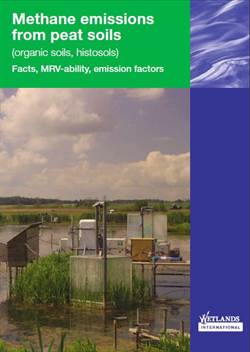
Methane emission from peat soils (organic soils, histosols) – Facts, MRV-ability, emission factors
-
Climate mitigation and adaptation
This report looks at methane emissions from wet peatlands, discusses the mechanisms behind these emissions, and presents tentative emission factors. This report was produced for the UNFCCC climate change meeting in Bonn, August 2009. Huge reductions of carbon dioxide (CO2) and nitrous oxide (N2O) emissions can be attained by rewetting drained peatlands. A post-2012 framework aiming at peatland rewetting must, however, also address associated methane (CH4) emissions.
The scientific data base for methane (CH4) emissions from peatland is much larger than that for CO2 or N2O. The data show that, once anaerobic conditions are given, the availability of fresh plant material is the major factor in methane production. Old (recalcitrant) peat plays only a subordinate role.
The annual mean water level is a surprisingly good indicator for methane emissions, but at high water levels the cover of aerenchymous shunts (gas conductive plant tissue) becomes a better proxy. Ideally, both water level and cover of aerenchymous shunts should be assessed to arrive at robust estimates for methane emissions.
The available data provide sufficient guidance for arriving at consistent Tier 1 methodologies as presented in this report. For higher Tier approaches, vegetation provides a promising basis for development of more detailed emission factors. Vegetation is a strong indicator for mean water levels and can provide – with extra attention for aerenchymous shunts – a robust proxy for accurate and spatially explicit estimates of methane emissions over large areas.
Author(s): John Couwenberg, Greifswald University

